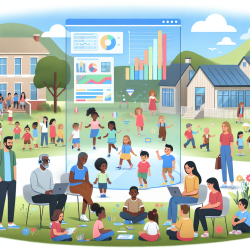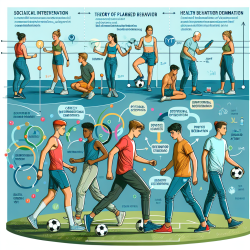Empowering Change: Using Data to Foster Safer Communities for Our Children
As professionals dedicated to improving the lives of children, it is crucial to stay informed and proactive about issues that affect their safety and well-being. One such issue is gun violence, a complex problem that requires a multi-faceted approach. The research article "Gun Violence in United States: In Search for a Solution" provides valuable insights using the Social Ecological Model (SEM) to address this pressing concern.
Understanding the Social Ecological Model
The SEM, developed by the Center for Disease Control and Prevention (CDC), offers a comprehensive framework for understanding the factors that contribute to gun violence. It emphasizes four levels of influence: individual, relationships, community, and society. Each level presents unique opportunities for intervention, making it a powerful tool for practitioners seeking to create safer environments for children.
Individual Level Interventions
At the individual level, the SEM highlights the importance of addressing personal attributes that may contribute to violent behavior. Practitioners can play a pivotal role by identifying at-risk individuals and providing targeted mental health services. This includes recognizing signs of social withdrawal, poor impulse control, and fascination with violence, which are often precursors to violent acts.
Interpersonal Level Interventions
Relationships with peers and family members are critical in shaping an individual's behavior. The SEM suggests that practitioners can work with schools and families to foster open communication and early intervention. Encouraging peers and family members to report concerning behavior can prevent potential tragedies by ensuring that individuals receive the help they need.
Community Level Interventions
Communities play a vital role in shaping social norms and providing resources for violence prevention. Schools and other community organizations can implement programs that teach non-violence and personal responsibility from a young age. Zero-tolerance policies for violence and programs for anger management and counseling are examples of community-level interventions that can significantly reduce the risk of gun violence.
Societal Level Interventions
At the societal level, media plays a crucial role in shaping public perception and attitudes towards gun violence. Responsible reporting and the inclusion of mental health professionals in media discussions can help reduce the glorification of violence and provide the public with accurate information. Policymakers can also contribute by supporting research and implementing policies that restrict access to firearms for individuals at risk of committing violence.
The Path Forward: Research and Collaboration
While the SEM provides a robust framework for addressing gun violence, further research is essential to refine these interventions and develop new strategies. Practitioners are encouraged to engage in ongoing research and collaboration with policymakers, educators, and mental health professionals to create comprehensive solutions that protect our children.
To read the original research paper, please follow this link: Gun Violence in United States: In Search for a Solution.










